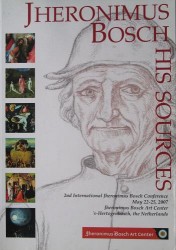
Kavaler 2010
“Microarchitecture circa 1500 as Model of the Sacred” (Ethan Matt Kavaler) 2010
[in: Eric De Bruyn and Jos Koldeweij (eds.), Jheronimus Bosch. His Sources. 2nd International Jheronimus Bosch Conference, May 22-25, 2007, Jheronimus Bosch Art Center, ’s-Hertogenbosch, the Netherlands. Jheronimus Bosch Art Center, ’s-Hertogenbosch, 2010, pp. 191-204]
The microarchitecture (those projects of modest scale such as pulpits, baptismal fonts, fountains and sacrament houses) of the late fifteenth and early sixteenth century is notable neither for its precious materials nor for its representation of human figures, but rather for its structure and inventive masonry forms. Its plant-like carving and fine compositions of linear tracery had potential metaphysical connotations: floral and vegetal carving could imply the mystical presence of God actively transforming inanimate matter and geometric tracery could convey the pre-material world of divine conception, a purity of form possible only in the mind of God.
As Paul Vandenbroeck has noted [Vandenbroeck 1989: 47/52-72] the Fountain of Life on the left wing of Bosch’s Garden of Delights is a hybrid of architectural and botanical elements that in part resembles the tubes and shafts of contemporary sacrament houses with their profuse vegetal ornament. It is a work of architecture made animate at the site of creation and can be interpreted as the manifestation of divine will. At the same time the surroundings of the fountain on the left wing show that the world is already deviating from God’s plan and on the central panel the world of creation evolves into a false paradise, even farther from God’s initial command. We must remember that the Middle Ages had entrusted nature with the continuation of all species of man and animal, with sexual reproduction and sexual behaviour. Circa 1500 vegetal imagery (vines, branches, flowers and other plants) could also be associated with the notion of dangerous sensuality accompanying sexual behaviour. Probably the vegetal imagery in Bosch’s Garden of Delights also refers to this danger.
The interest of this contribution for a better understanding of Bosch seems to be rather limited. The only relevant idea (the one about the Fountain of Life in the Garden of Delights) has already been dealt with by Paul Vandenbroeck. Kavaler’s article contains quite some useful information about microarchitecture around 1500 as such, though.
[explicit 18th May 2012]